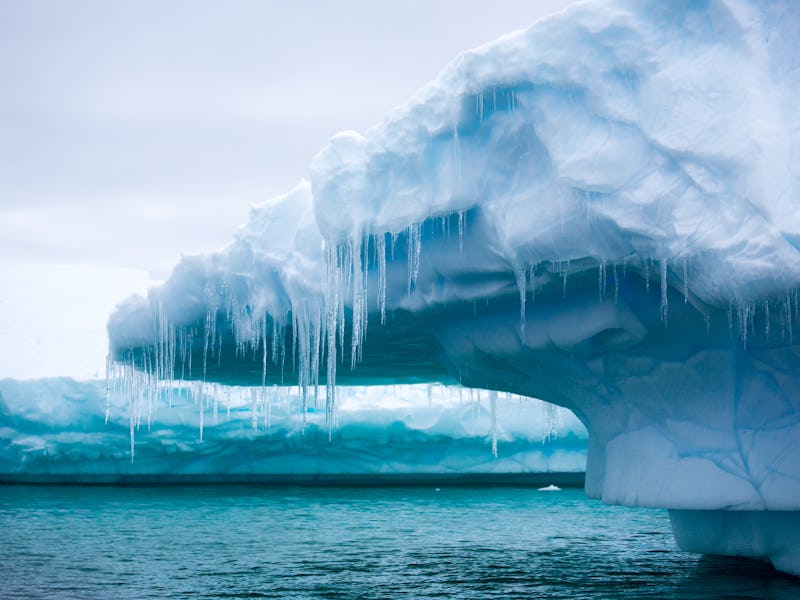Ocean Waves Don’t Freeze in Place, But Sea Ice Is Still Magical
Behold, the incredible and totally imaginary frozen wave.

Maybe you’ve heard of this rare and awesome phenomenon: Under a very peculiar set of environmental conditions, a frigid ocean wave rises up and freezes in place, stuck forever in a surf-worthy crest.
Only problem is, it’s not a thing. The rumor persists because it makes a compelling mental image — and because the magic of photography tricks us so easily.
A photo set, taken by Caltech researcher Tony Travouillon during a 2004 trip to Antarctica, most frequently serves as an example of the urban myth. The images show stunning pillars of blue-hued ice towering over the surface.
But these structures, magnificent as they are, were not formed by waves. Instead, the culprits are pressure and time.
Dense ice gives the frozen crests their blue color. Air bubbles that would naturally make ice appear white are squeezed out or squeezed tight; lacking these, the ice absorbs red and yellow light while reflecting blue, like an optical filter.
Here’s something a little closer to a true frozen wave: Last winter photographer Jonathan Nimerfroh captured a stunning set of photos of ice-laden waves in Nantucket, Massachusetts.
Despite how they look, even these waves aren’t frozen in place. They’re more accurately slush waves, like what would happen if you filled Cape Cod Bay with a giant Slurpee.
When the ocean gets very cold (sea water freezes at about 28.4 degrees Fahrenheit) it starts to form ice. The ice starts out as frazil — icicle-like shards that float, bob, and bump up against each other.
Frazil gathers along shorelines, forced into place by the relentless push of the waves against the beach. This slushy mix of ice and water formed the waves in Nimerfroh’s shots. Frazil can solidify into pancakes or sheets of ice, but it won’t, unfortunately, stop dead mid-crest.
Sorry, dudes, surf’s off — that frozen wave will never be caught.